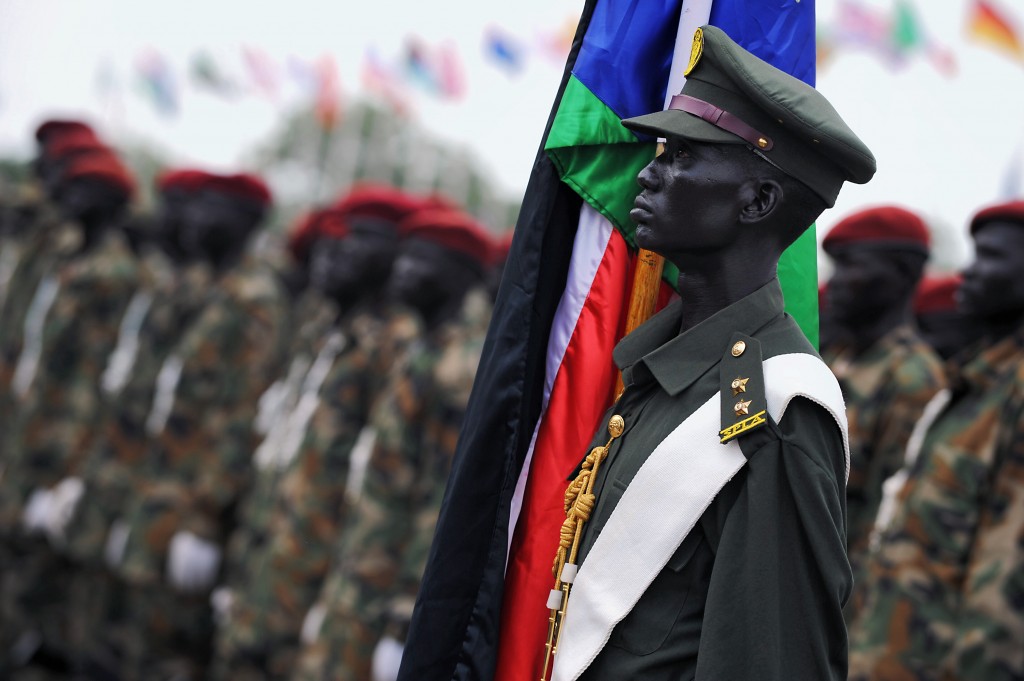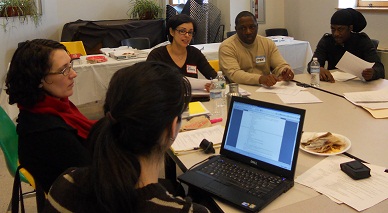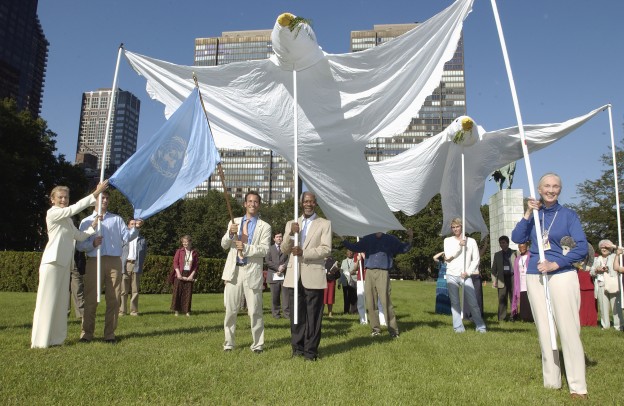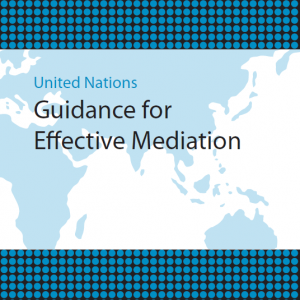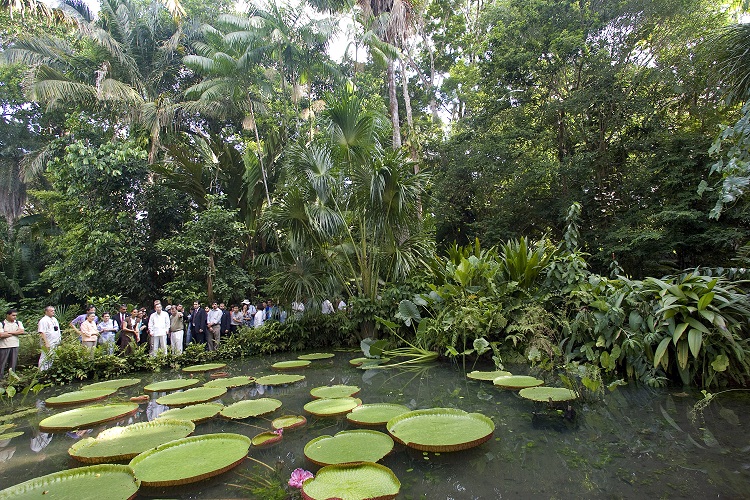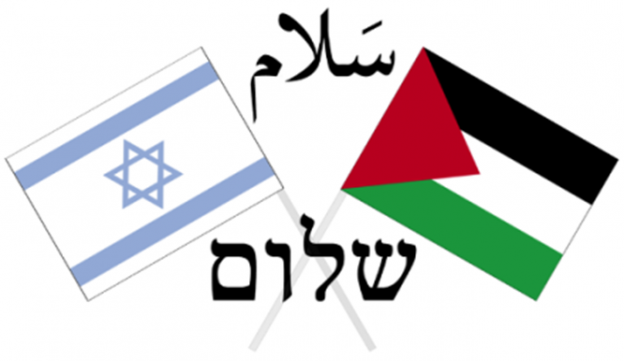Practice Initiatives
Below is a current listing of MD-ICCCR Practice Initiatives. Some projects are Applied Research, or field research, e.g., the Burma-Myanmar Project. Others are service projects designed to provide evidence-based support to groups and communities. Still others are a combination of the two, combining service and knowledge-generation, e.g., the Fortune Academy PAR Project.
South Sudan has experienced deadly conflict for much of the last five decades. While most attention has focused on South Sudan’s civil war with the now Republic of Sudan to the north, in reality, interrelated conflicts persist in multiple layers of society. Paradoxically, the termination of the war of nationhood activated ‘local conflicts’, which have led to the killing of thousands of people since peace was brokered with the north in 2005. This paper presents an assessment of a ‘typical local conflict’ between two Dinka clans, based on field research in Jonglei State, using a systemic approach to conflict assessment adapted from dynamical systems theory. This approach not only captures the multiple sources and complex temporal dynamics of the conflict, but can also help identify patterns that are central to the conflict that are unrecognisable by other means (Coleman et al. 2007, 2011). The analysis reveals that typical explanations for local violence in post-civil war contexts such as resource and political competition and insecurity are an over-simplification in this context. These factors undoubtedly influence the conflict, but can be better understood as elements of a dynamical system where the probability of violence is strongly influenced by the clans’ competing desire to maximise group pride. The conflict has resisted transformation because traditional ‘pride-sensitive’ conflict mechanisms have become ineffective, while most interventions by state institutions have exacerbated the conflict. These findings reveal an emotional dimension to conflict that might be overlooked in conventional approaches to conflict assessment and peacebuilding, although the case study is not to be generalised to all local conflict in South Sudan.
Publications
Pride, conflict and complexity: Applying dynamical systems theory to understand local conflict in South Sudan
By Stephen Gray and Josefine Roos
For more information about this project contact Josefine Roos at josefine.roos@gmail.com
The International Center for Cooperation and Conflict Resolution (ICCCR) at Teachers College, Columbia University is partnering with The Fortune Society, a Harlem based nonprofit organization that supports formerly incarcerated men and women in reentering society and rebuilding their lives.
These two entities, with support from the Advanced Consortium on Cooperation, Conflict, and Complexity (AC4), are conducting a Participatory Action Research (PAR) project. In the PAR methodology, community members and researchers work together to address challenges faced by the community, and, in so doing, share knowledge and information. Moreover, the researchers learn about the lived-experiences of the community and the community members learn research, self-reflective practices and problem-solving skills.
Project Objectives
-
Using a PAR paradigm, investigate the culture (philosophy, policies and practices) of the Fortune Academy and how they impact the success of residents when they re-enter society. Surface the causal models (implicit, explicit) that the leadership holds about how the Academy works.
-
Focus on how the Academy culture creates conditions for conflict resolution without violence, using experience and practice rather than conflict resolution theory.
-
Reflect on the experiences of PAR team membership and how it creates a collaborative learning community.
Publications
Participatory Action Research, Conflict Resolution and Communities
In The Handbook of Conflict Resolution: Theory and Practice, (3rd Edition)
By Cohen, C.E., Neshkes, R., Pryce-Screen, M., Hernandez, E., Linder, M. & Doherty-Baker, M. (forthcoming)
Services, tools, and resources
In Our Backyard: Overcoming Community Resistance to Reentry Housing (A NIMBY Toolkit)
(In collaboration between C.E. Cohen and B.I Rodriguez, ICCCR at Teachers College, The Fortune Society and the John Jay College of Criminal Justice.)
With over 725,000 men and women being released from prison each year, the need for housing assistance for the formerly incarcerated population is immense. Research has identified a significant relationship between homelessness and re-offending. Unfortunately, a number of barriers place the formerly incarcerated population at a disadvantage when trying to access safe and stable housing, e.g., public housing policies deny access to individuals with certain criminal convictions; the private market is expensive and discrimination is wide-spread; etc.
Community-based service providers in the reentry field have begun to respond to this overwhelming need with few resources. This toolkit highlights the experience of The Fortune Society in its development of a housing project in West Harlem. Through Fortune’s experience, organizations can glean strategies to help them overcome one of the greatest challenges associated with providing housing to formerly incarcerated men and women: Not in My Backyard (“NIMBY.”) NIMBY opposition can result in significant project delays, or even discontinuation. This case study documents how an organization can address a myriad of community concerns and ultimately garner support for its project. By offering tangible steps and lessons learned by Fortune, this toolkit provides guidance and encouragement to those organizations working to assist formerly incarcerated people and create safer communities.
(In collaboration between C.E. Cohen and B.I Rodriguez, ICCCR at Teachers College, The Fortune Society and the John Jay College of Criminal Justice.)
This Toolkit was developed to share promising practices for developing cultural competence in organizations that provide services to men and women with histories of incarceration. It highlights the experience of The Fortune Society and their policy of creating cultural competence through the hiring and development of individuals with life histories similar to the reentry client population. This hiring strategy provides job opportunities and skill development to formerly incarcerated men and women and enhances service delivery capability by hiring staff with experiential knowledge.
The Toolkit includes an overview of the relevant scholarly work on culturally competent hiring practices and its impact on organizations and their staff and clients. The Toolkit then details The Fortune Society’s hiring philosophy and the strategies it employs to identify, nurture and develop employees whose experiences mirror the challenges and limited work experiences of Fortune’s clients. It culminates with key lessons and steps to help other organizations as they work to develop or sustain culturally competent hiring practices.
For more information about this project contact Kyong Mazzaro at kmazzaro(at)ei.columbia.edu
Approximately five percent of more difficult conflicts enter into escalating spirals that become increasingly intractable. Scholarship has identified a variety of individual-level and organizational-level variables associated with constructive vs. destructive attractors of organization conflict. At the individual-leader level, cooperative-competitive orientation, levels of integrative, behavioral, and emotional complexity, tolerance for ambiguity, and temporal scope or consideration for future consequences have all been associated with more constructive vs. destructive patterns of disputing. At the organizational level external environment, type of organization, cross-cutting structures, cultural complexity, task-reward interdependence, social structures, and decision-making structures have also been identified. However, there is currently no unifying framework for assessing how various individual competencies and organizational structures work in concert to affect the probabilities for constructive vs. destructive conflict dynamics. This project identifies an approach for assessing conflict competencies and structures at both of these levels.
-
Individual-Level Leader Assessment
This portion of the project aims to identify various individual leader competencies that relate to long-term conflict dynamics between individuals in a workplace environment. Participants will first be asked to complete a measure of complex thinking, affect, and behavior and will then participate in an online simulation of a complex social environment. This online agent-based simulation will provide participants with a complex social environment that they must attempt to change (for the better). Our research will investigate how decision-making patterns in the simulation relate to the measures of complexity, and what types of these patterns lead to positive outcomes. This project is currently in the conceptual phase of development in partnership with the Columbia Center for New Media Teaching and Learning (CCNMTL)at Columbia University.
-
Development of the Organization Level Framework
The aims of this component of project are twofold. First, we have proposed a conceptual framework for leaders to assess the structure of their organization in terms of facilitating/inhibiting constructive and destructive conflict dynamics (increasing/ decreasing probabilities). Second, we have developed guidelines for leaders to conduct organization-level assessments and to explore relevant outcomes in their organization (e.g. conflict climate, innovation, morale, organization-commitment, and procedural justice). The next steps for this project are currently in the conceptual phase.
Publications
Playing the odds: A multi-level framework for addressing probabilities for intractable conflict at work
By Peter T. Coleman, Nicholas Redding & Lily Ng (under review)
Research has identified a variety of individual-level and organizational-level variables associated with constructive versus destructive patterns of organizational conflict. However, this multitude of variables represents something of an embarrassment of riches. Currently, there is no unifying framework for understanding how individual attributes and competencies and organizational structures and processes work in concert to affect the probabilities for destructive, enduring conflicts. Understanding the genesis, maintenance and transformation of conflict attractors in organizations requires more than an understanding of the individual and contextual factors involved, and must include their inter-relationships, the timescales in which they unfold, and the mechanisms that affect transmission of conflict dynamics from one level to another. This monograph presents such a framework, offering a comprehensive approach for conceptualizing and assessing conflict competencies and structures at multiple levels of organizations.
Overview
In recent years, and especially in the context of the development of the Post-2015 United Nations Development Agenda, the absence of clear goals related to peace, justice, security, and human rights has become growingly noticeable. This is evident in many expert group discussions that are taking place in many international fora. One example is the recent study on the relationship between armed violence and Millennium Development Goals (MDG) achievement by the Geneva Declaration Secretariat, which highlighted a series of emerging associations and relationships between armed violence – particularly homicides and direct conflict deaths – and specific human development and MDG outcomes. Although data and research are limited, there is an emerging trend.
Based on decades of research on conflict intractability and drivers of peace, we are currently working on developing a novel framework of Sustainable Peace Goals that incorporates the peace dimension that has been missing in the broader notion of sustainable human development.
Publications
Conclusion: The Essence of Peace? Toward a Comprehensive and Parsimonious Model of Sustainable Peace
In Peter T. Coleman (Ed.), Psychological Components of Sustainable Peace
By Peter T. Coleman (2012)
The excellent chapters in this book offer a vast array of psychosocial conditions and processes which have been linked to sustainable peace. This concluding chapter offers a summary and synthesis of this research; highlighting the basic commonalities of the construct of sustainable peace that underlay the many aspects discussed in the book, and offering a more parsimonious model of sustainable peace, informed by dynamical systems theory, which conceptualizes the effects of the many component parts on increasing and decreasing the probabilities of stable dynamics of destructive conflict and peace.
Services, tools, and resources
Peace and security. Thematic Think Piece- PBSO
UN System Task Team on the Post-2015 UN Development Agenda (2015)
More Violence, Less Development: Examining the relationship between armed violence and MDG achievement
Study by the Geneva Declaration Secretariat (2012)
(United Nations Guidance for Effective Mediation)
Overview
The ICCCR has been actively engaged in a series of initiatives directed to enhance the collaboration between academics working on mediation, conflict resolution, sustainability and peace and the United Nations Mediation Support Unit at the Department of Political Affairs. Through the development of our research agenda on the basic dimensions of mediation and the role of mediator adaptivity, optimality and systemic efficacy in disputant and mediator satisfaction, fairness, efficiency, and sustainability of agreements, we have provided input for the 2012 Report of the Secretary-General on Mediation and the Unit’s guidance for effective mediation. Furthermore, our Dr. Peter T. Coleman, Director of the ICCCR, is also an active member of the United Nations Academic Advisory Council on Mediation (AAC), an organ established by Department of Political Affairs with the purpose of allowing the United Nations to tap into the best research and knowledge available from the global academic community.
Currently, most of our initiatives and collaboration with the MSU revolve around supporting the work of the AAC and the further development and implementation of the Guidance. Our objectives are to develop relevant cutting-edge research on mediation, to serve as a connecting point with mediation experts from our network around the world, and to provide the necessary support for the establishment of an infrastructure that will allow for more collaboration between Academia and the UN in all matters related to international mediation.
Publications
Putting the Peaces Together: Introducing a Situated Model of Mediation
By Peter T. Coleman, Katharina Kugler, Christianna Gozzi, Kyong Mazzaro, Nora El Zokm, and Kenneth Kressel (in progress)
Although academic research on mediation has progressed considerably over the last few decades, it still faces considerable challenges to its practical relevance. Today, the findings from research on mediation present a fractured, piecemeal understanding of what constitutes “effective mediation” and how to achieve it. Research is typically either micro (e.g., mediator style) and decontextualized from the broader system of conflict management, or macro (e.g., case comparisons) and disconnected from mediator decisions and action. As a consequence, many models of mediation practice are not derived from sound theory or evidence-based research (Coleman, 2011). Knowledge generated within academia oftentimes does not reach practitioners and valuable field experiences and practices rarely inform academia – impeding mutual learning and development (Honeyman, 2009; UN Report, 2012).
Services, tools, and resources
United Nations Guidance for Effective Mediation
The UN Guidance for Effective Mediation, presented in September 2012 at a high-level event on the sidelines of the 67th United Nations General Assembly, is the first broad UN guidance of this kind available to mediators. It reflects the experience of mediators over more than six decades and was developed in close cooperation with United Nations partners including member states, regional and subregional organizations.
Report of the Secretary General on Strengthening the role of mediation in the peaceful settlement of disputes, conflict prevention and resolution (A/66/811)
In its resolution 65/283, the General Assembly requested the Secretary-General to submit a report on the implementation of the resolution entitled “Strengthening the role of mediation in the peaceful settlement of disputes, conflict prevention and resolution”. The present report outlines progress made in implementing the resolution, in the context of key trends in the field of mediation. Also submitted as annexes to the present report are the Guidance for Effective Mediation and the views of Member States.
Overview
The Peruvian Andes-Amazon interface region holds some of the world’s most biologically important forests that provide essential ecosystem services on local, regional and global scales. In 2001 the Peruvian government and La Asociación para la Conservación de la Cuenca Amazonica (ACCA) jointly established the Los Amigos Conservation Concession to aid in the conservation of these important forests. Since its creation, the concession has faced many competing pressures including: local communities struggling to meet subsistence and livelihoods needs, increases in illegal gold mining and logging, and conflicts among settler communities, indigenous groups, and forest managers.
In response to the management challenges and conflicts in the area, Dr. Fisher is working with ACCA to revise the Los Amigos management plan in an effort to devise strategies to mitigate the drivers of conflict through improved forest governance. To accomplish this, the team is piloting the Conflict-Sensitive Conservation methodology developed by the International Institute for Sustainable Development. That framework enables natural resource managers to design conservation strategies that minimize the social costs of conservation in order to minimize conflict risk and maximize peace-building opportunities Through conflict analysis workshops, the pilot project is working to identify the drivers of conflict in the communities neighboring the concession and assess the impacts of conservation programming on social stability and local economies. Knowledge generated during these workshops is being used to design training clinics for concession managers and field personnel in order to improve their ability to interface with stakeholders on contentious issues and to recognize opportunities to improve the effectiveness of their livelihoods programming.
For more information about this project contact Joshua Fisher at jf2788(at)columbia.edu
This study seeks to understand the drivers for, and the constraints against, destructive conflict and sustainable peace within Israel and the Occupied Territories. The protracted Israeli-Palestinian conflict has brought decades of misery to the region, again and again reaching a stalemate in negotiations and dashing the hopes of millions. This pattern has developed into a state that conflict scholars label as intractable and mathematicians characterize as an attractor: the Israel-Palestinian conflict has thus become an intractable attractor. But do we really understand why?
Psychologists have become increasingly aware of the limitations of using explicit self-report measures to assess motives, attitudes and opinions, particularly with regard to socially sensitive issues such as conflict and peace. This is due to the challenges posed by both the desire of respondents to appear reasonable and thus answer survey questions in socially or politically desirable ways, as well as their common lack of awareness of their own attitudes regarding the specific objects being evaluated. This is particularly true in areas of protracted conflict, where citizens have been raised and socialized in a discourse of war. Under such conditions, simply asking people about their motives through surveys or focus groups fails to get beyond their “automatic mental programming” (what they have been conditioned to say) in order to identify what specifically would motivate them to act differently. Rule Development Experimentation (RDE), a leading-edge method of consumer market research which is grounded in the scientific principles of stimulus response (from experimental psychology), conjoint analysis (from experimental design of ideas and mathematical statistics) and internet-based market-testing (from marketing research), was developed to circumvent such mental-programming and help identify the clusters of motives or mindsets which drive different behaviors. The RDE tool combines several statements of conflict or peace into short vignettes and enables each respondent to see and rate each vignette as a whole description. Respondents are then divided into groups based on similar patterns of interests and motivations. Researchers expect that examining motives with this new methodology will allow for a more robust understanding of the relationships between such motives and critical policy variables.
Related Publications
Coleman, P. T., Moskowitz, H., Harel-Marian, T., Onufrey, S., Chatman, L., and Goldstein, L. (working paper). Mapping peaces: Investigating distinct mind types for promoting peace in the Middle East. To be submitted to Journal of Conflict Resolution.
